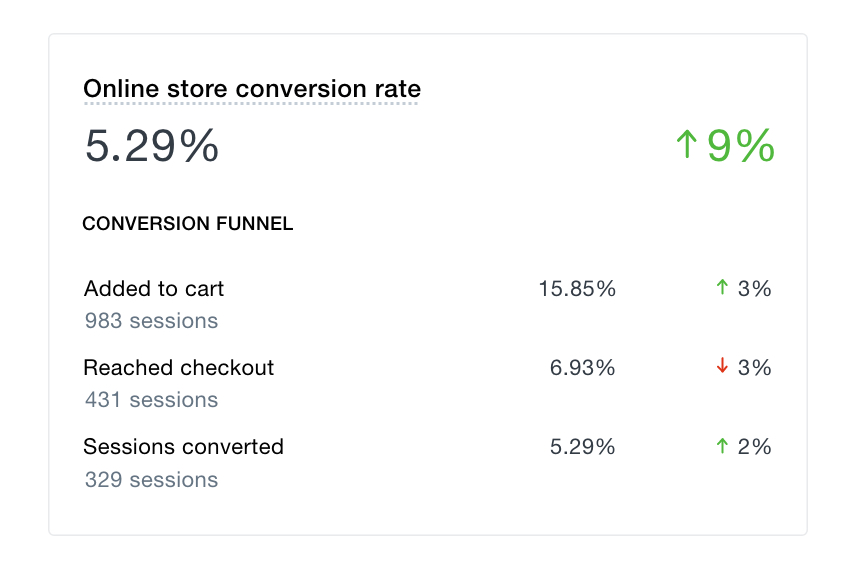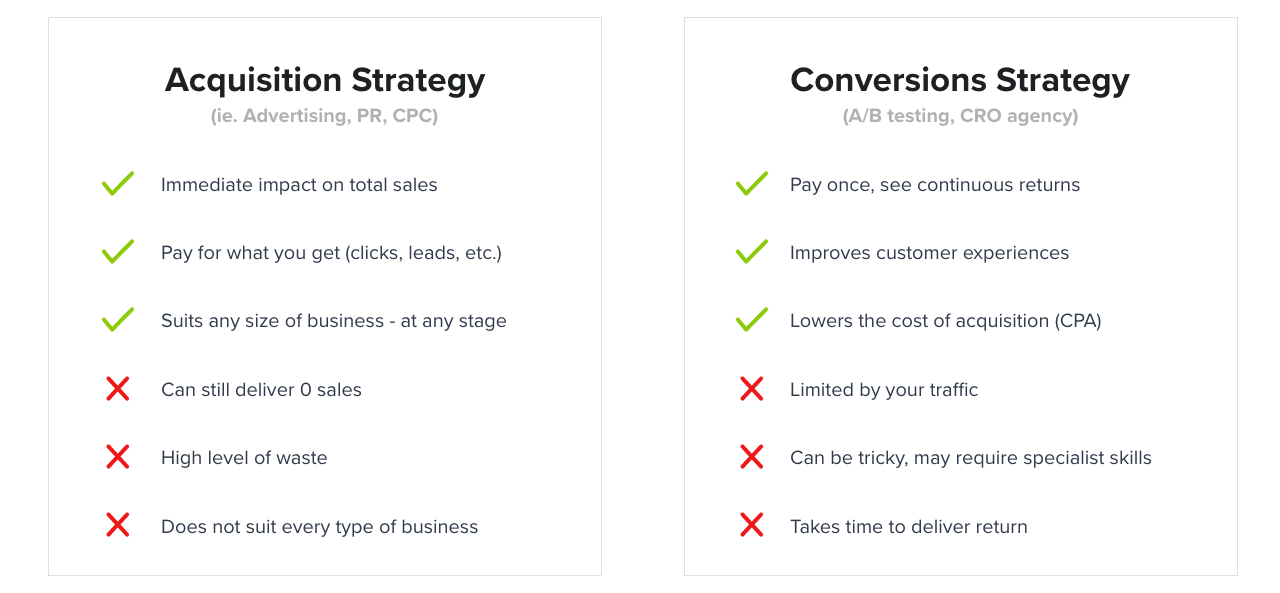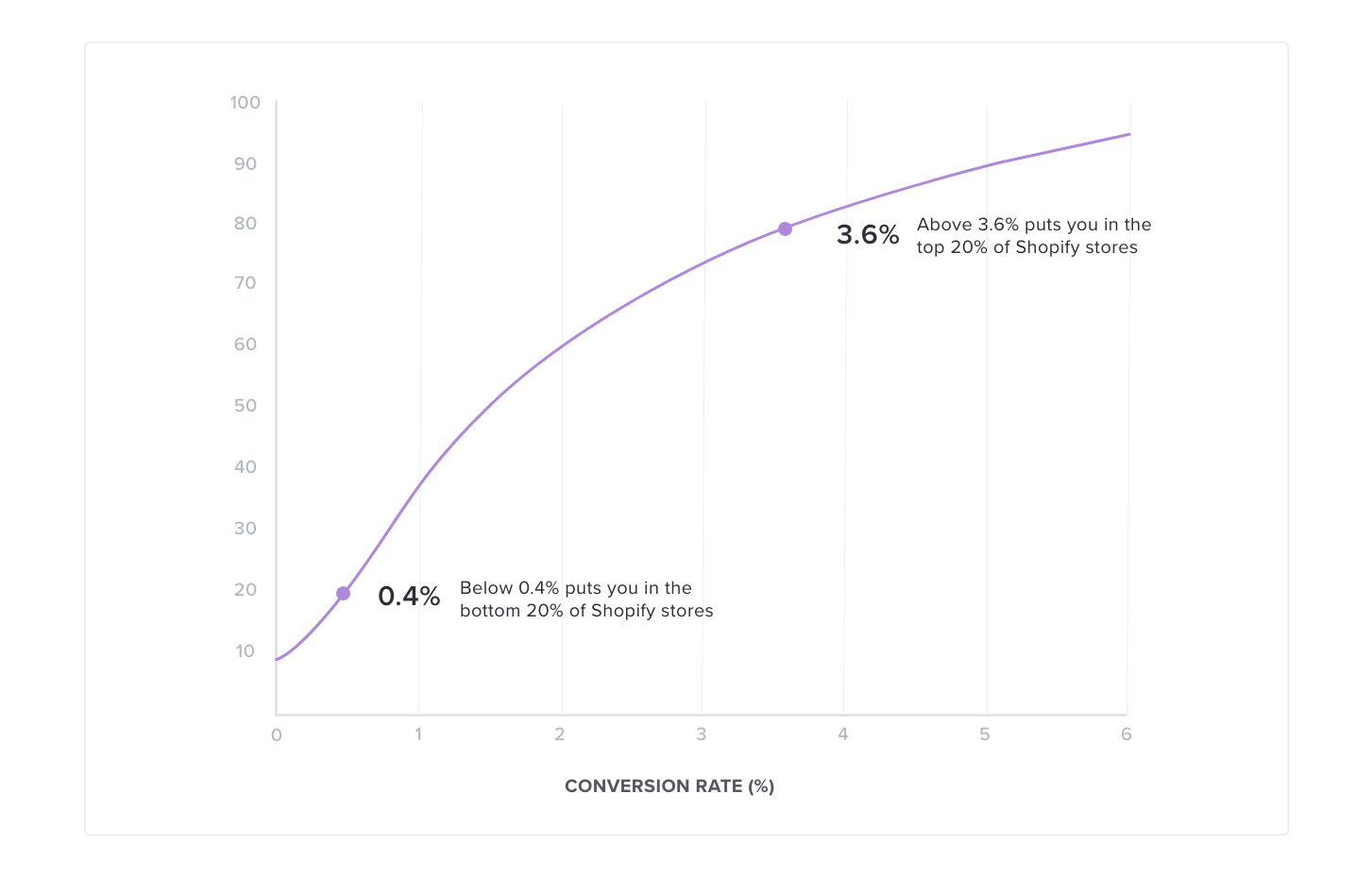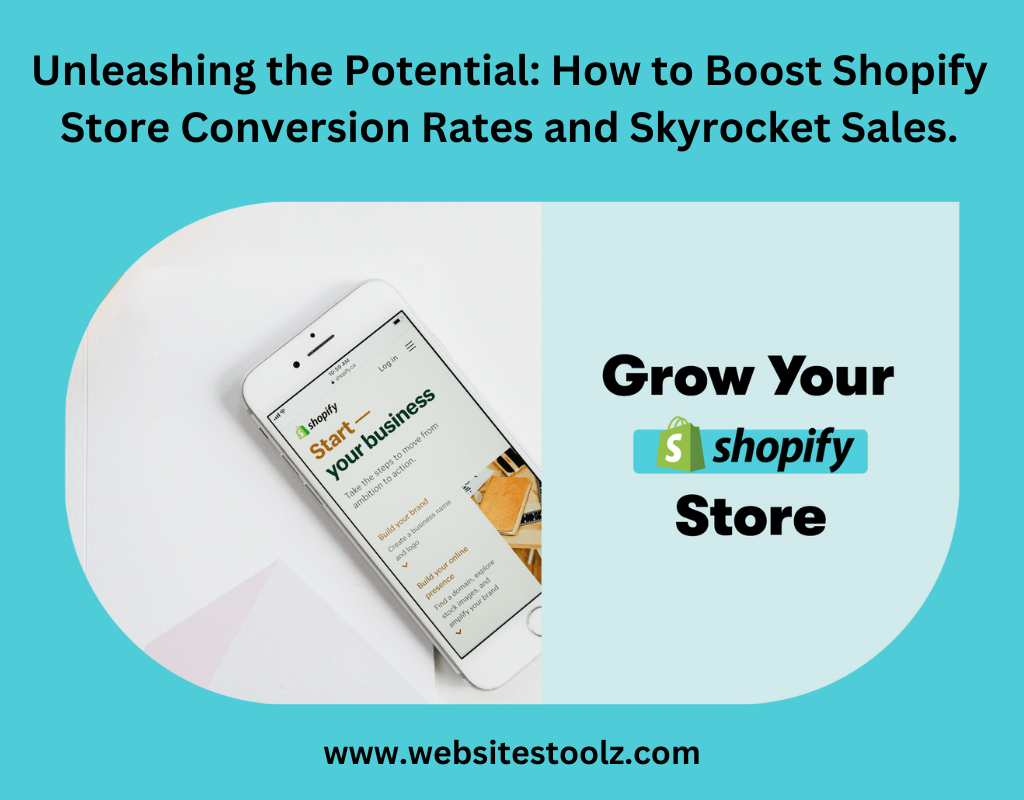Just imagine all those marketing dollars spent on Google and Facebook ads that are driving traffic to your website or shopify store, and your visitors leave without making a purchase. If you are experiencing this problem, this article is for you. While most marketers focus on driving traffic to your online store very little attention is paid to conversion rates and how you can improve last mile conversion of visitors into revenue. If you dont measure your online store average conversion rate you wont know what is working and what is not and you will keep spending money endlessly on ad campaigns that dont get you the desired sales. Focussing more on improving your shopify store ecomeerce conversion rates can boost the profitability of every marketing campaign you run. This guide shows you how to increase your Shopify Conversion Rates. So lets get started?
What is your online store conversion rate?
To calculate your Shopify conversion rate, you need to know the number of unique visitors and the number of conversions your store has received. To work it out yourself, you divide your conversions by your visitors (that shows you how many conversions you can expect to receive from each visitor). To turn that number into a percentage (showing you how many conversions you can expect from 100 visitors) you simply multiply by 100.
The best part with having your online store on shopify is that shopify calculates your store’s average conversion rate automatically, and you can access the current figure from your store’s Analytics dashboards. The widget breaks down your online stores conversions into three stages, so you can see how many people reached your shopping cart, checkout and “thank you” pages. Alongside cart abandonment, your ecommerce conversion rate is one of the most important health indicators for your store. Understanding these key metrics will help you to optimise your marketing campaigns and identify UX issues before they affect your revenue. Click here to read this post “Top 3 proven ways to reduce shopping cart abandonment”

the conversion rate dashboard widget shows you data for a specific date range. Alternatively, you might want to see how your Shopify conversion rate has changed over time. For that, you need to view the “Online Store Conversion Over Time” report.t
This report is a helpful way to track the impact of any changes you make to your store. However, you should bear in mind that conversion rate can be affected by a wide range of factors, including the quality of your traffic and the products you are offering.
Why you should monitor your store conversion rates?
Increasing your Shopify store conversion rate is the most cost-effective way to build your revenue. Instead of spending your marketing budget on advertising, which can end up reducing the quality of your traffic, a conversion rate optimization strategy is a reliable way to get more sales. There are other good reasons to focus on conversion rates, too; working on this aspect of your business has some useful side-effects
- Customer Insight: If your in the retail segment then your store retail conversion rate tells you whether your store offers enough value to the people who visit it. Following this metric can tell you a lot about your products, your prices and your store itself.
- User Experience: Improving your conversion rates often means thinking about your User Experience (UX). Reducing ambiguity, demonstrating your credibility, and highlighting the value of your products can provide long-term benefits.
- Remarketing: as any marketer will tell you, the best audience for future sales is former customers. Re-marketing is a huge part of an effective marketing mix, but it can’t take place unless you make the first sale. Finding a way to turn a few more uncertain browsers into customers (and then re-marketing to them) is more efficient than spending big on marketing to strangers. Must read blog post “Top 11 Proven Hacks to boost ecommerce conversion rates.”

The biggest drawbacks of a conversions strategy are the skills it can require and the time it takes to start generating more sales. Fortunately, there are a number of fantastic resources available to help store owners get there quicker.
What is a good conversion rate on Shopify?
The Shopify benchmarking and analytics service Littledata performs regular surveys on average order values (AOV) and conversion rates across thousands of stores. According to their research:
- In 2019, the average order value (what each customer spends within a month of their first purchase) across Shopify was $63.50.
- The average conversion rate was just 1.5%.
- That puts it below the most recent eCommerce conversion rate benchmarks of around 1.85%.
In May 2020, the average conversion rate rose to 1.6%. Whilst this number is higher than it was in 2019, it is still below the industry average.

According to the most recent LittleData reports, if your Shopify conversion rate is higher than 3.1%, you’re in the top 20% of Shopify stores. In that case, working on your conversion rate will produce a smaller return (you should work on something else). However, for stores that convert between 1% and 3% of visitors, increasing conversion rates is the most efficient form of marketing. Please note the conversion in retail will be different from segment to segment.
How To Increase Your Shopify Conversion Rate
There are countless factors that guide your customers’ decisions at each stage of the conversion funnel. However, in order to structure a conversion rate optimization project, it is helpful to break these different factors down into three groups:
- INFORMATION: How accessible are the most important details?
- MOTIVATION: How much does the customer feel they have to gain?
- FRICTION: How easy and safe does it feel?
Think about it like this: before making a purchase, a customer needs to know what you are selling and why they should buy it. The easier you can make the process, the more people will do it.
There is no universal formula for increasing your conversion rate. But, by taking a systematic approach and regularly checking your key metrics, you can be more confident about what is working and what isn’t. These are some of the tried-and-tested ways to make information more available, increase your customers’ motivation and reduce Friction… Check out this blog post “How to setup shopify conversions with WebsitesToolz” social proof
Unleashing the Potential: How to Boost Shopify Conversion Rates and Skyrocket Sales.
In today’s competitive e-commerce landscape, having a Shopify store is not enough. To truly thrive in this space, you need to increase your conversion rates and drive sales. One effective way to achieve this is by utilizing social proof tools.
Social proof is a psychological phenomenon where people rely on the actions and feedback of others to guide their own decision-making. By incorporating social proof into your Shopify store, you can instill trust and confidence in potential customers, ultimately boosting your conversion rates and increasing sales. Here are some social proof tools and strategies that can help you unleash the potential of your Shopify store. WebsitesToolz offers you all the social proof tools you need to boost online conversion rates and sales. Checkout the youtube video guides below.
Customer Reviews and Testimonials:
Encourage your existing customers to leave reviews and testimonials about their experience with your products or services. Display these reviews prominently on your website to showcase the positive experiences of others. This is a powerful way to build trust and validate the quality of your offerings.
Social Media Influence:
Leverage the power of social media by showcasing the number of followers, likes, or shares your brand has. This demonstrates popularity and signals to potential customers that others find your products or services valuable.
User-Generated Content:
Encourage your customers to share photos or videos of themselves using your products. This not only provides visual proof of your products’ quality but also engages your customers and creates a sense of community.
Influencer Endorsements:
Collaborate with influencers who align with your brand values and target audience. When influencers endorse your products, their loyal followers are more likely to trust and purchase from your store.
Trust Seals and Certifications:
Display trust seals from reputable authorities, such as SSL certificates or payment gateways, to assure visitors that your website is secure for transactions. This can significantly boost conversion rates by alleviating any concerns about online security.
Countdown Timers and Limited Stock Notifications:
Create a sense of urgency and scarcity by implementing countdown timers or limited stock notifications for your products. This can drive impulse purchases and increase conversion rates.
Social Proof Notifications:
Incorporate social proof notification widgets that display real-time actions taken by other visitors on your website, such as recent purchases or sign-ups. These notifications create a “fear of missing out” effect and can push potential customers towards making a purchase.
Case Studies and Success Stories:
Highlight case studies or success stories of customers who have achieved significant results using your products or services. This helps potential customers visualize the positive outcomes they can expect when purchasing from your store.
Personalized Recommendations:
Implement personalized product recommendations based on customers’ browsing and purchase history. This not only enhances the user experience but also increases the chances of cross-selling and upselling.
Live Chat and Customer Support:
Provide excellent customer support through live chat or chatbots. Addressing customers’ concerns promptly and efficiently can build trust and increase the likelihood of completing a purchase.
By leveraging these social proof tools and strategies, you can enhance your Shopify store’s credibility, instill trust in potential customers, and ultimately boost conversion rates and skyrocket sales. Remember to continuously monitor and analyze the effectiveness of these tactics to optimize your results and stay ahead of the competition.


The article mentions A/B testing and CRO tools. VWO (shorturl.at/krHLP) offers both capabilities. It has features like session recordings, heatmaps etc to analyze user behavior on the site and then further offers testing capabilities.
Pingback: 7 Best social proof tools to boost online sales | Blog| WebsitesToolz
Pingback: Empower Your Small Business with These 9 Easy-to-Use Website Builders.
Hey there! Just wanted to stop by and give a shoutout to your awesome blog. Your tips on affiliate marketing are truly tremendous. Earning an income from home has never been easier with affiliate promotion. It’s a fantastic way to earn passive income by promoting services you stand behind. Your blog is a goldmine of insights for budding online entrepreneurs. Keep up the fantastic work!
Hello there! Just dropping in to commend your excellent blog. Your insights on affiliate marketing are truly commendable. Making money from home has never been more accessible thanks to affiliate marketing. It’s all about leveraging your internet presence and promoting goods or services that resonate with your audience. Your blog is a invaluable resource for anyone curious about affiliate marketing. Keep on the amazing work!
Hey there! Just stopping in to give a shoutout to your amazing blog. Your insights on making money online are genuinely priceless. Making money from home has never been more accessible with affiliate marketing. It’s a wonderful way to earn passive income by promoting goods you stand behind. Your blog is a goldmine of information for aspiring online entrepreneurs. Keep up the fantastic work!
Hey there! Just popping in to give a shoutout to your amazing blog. Your tips on making money online are truly tremendous. Earning an income from home has never been more achievable with affiliate marketing. It’s a fantastic way to build passive income by promoting services you believe in. Your blog is a treasure trove of information for budding affiliate marketers. Keep up the fantastic work!
Hello there! Just dropping by to share my admiration for your fantastic blog. Your expertise on making money online are invaluable. Earning an income from home has never been more convenient with affiliate promotion. It’s a wonderful way to earn passive income by promoting products or services you trust. Your blog offers a treasure of insights for those exploring affiliate marketing. Keep up the awesome work!